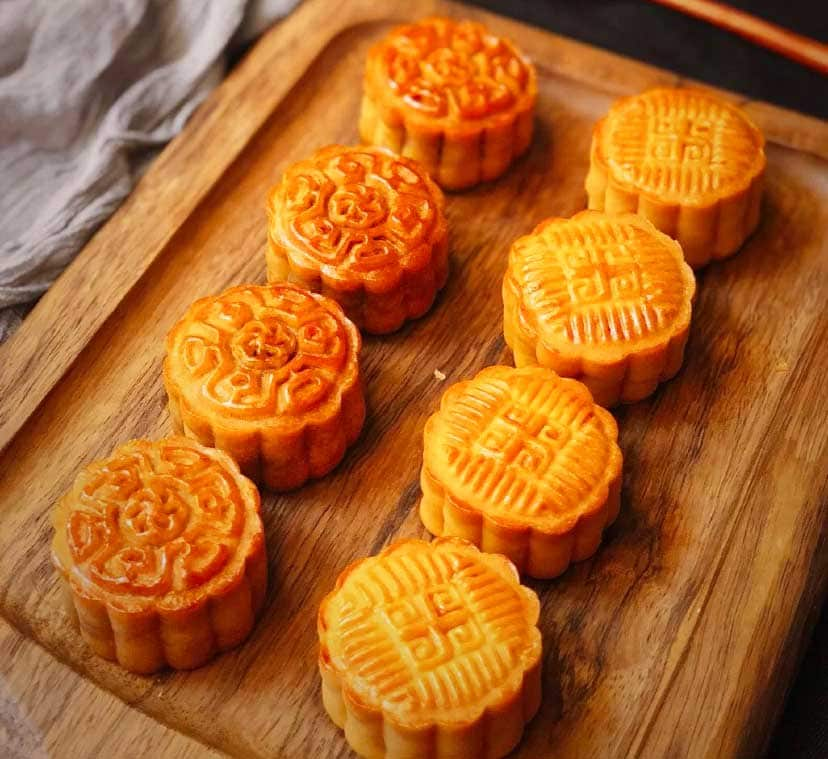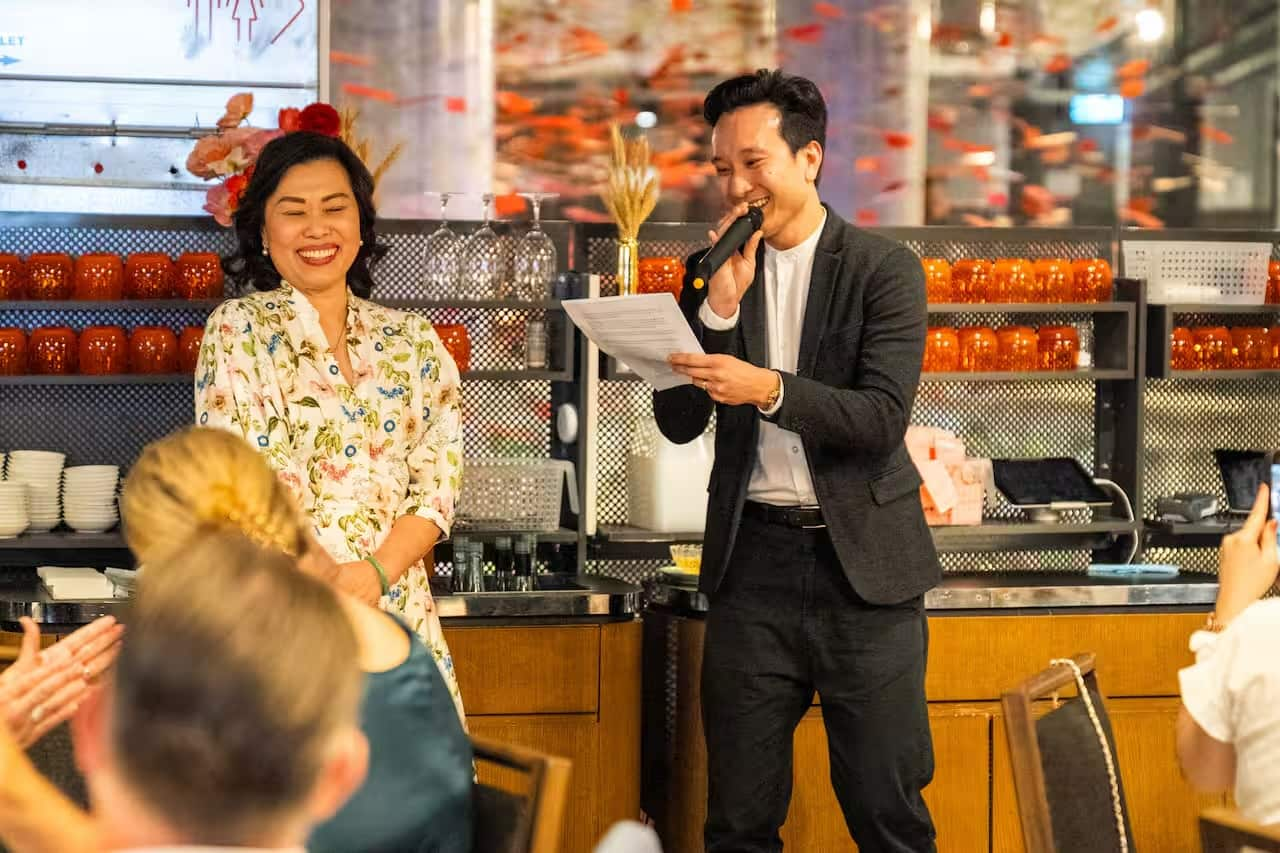As the lanterns light up Sydney and families gather for one of Asia’s most treasured traditions, the Mid-Autumn Festival (also known as the Moon Festival) returns as a time of gratitude, reunion, and celebration. At the heart of it all are mooncakes: the rich, symbolic pastries that are as much about connection as they are about flavour.
For Linh Trinh Nguyen, co-owner of Gong Grocer at World Square and a familiar face in Sydney’s grocery scene for more than 30 years, mooncakes are more than just a festive treat – they reflect the warmth of family, the ties that connect us, and the richness of heritage. Having once run the beloved Thai Kee IGA in Haymarket, Linh has spent decades bringing the flavours of home to Sydney’s Asian community.

“Moon Festival is the time we slow down, come together, and share food that carries so much meaning,” Linh says. “For me, the mooncake I always think of first is the white lotus seed paste mooncake with two salted egg yolks. It’s round, which symbolises unity, and eating it reminds me of my parents and of family, gathered around the table, drinking tea, and celebrating together.”
But the varieties of mooncakes can often be overwhelming, so here's a little explainer if you've never tried one before.
Traditional mooncake with salted egg yolk
According to Linh Trinh, this mooncake is the most traditional of all, synonymous with the Mid-Autumn Festival itself; containing smooth lotus seed paste and salted egg yolks to symbolise the full moon. For Linh however, its significance goes beyond flavour. “This one is my favourite because it takes me back to my parents. It’s the one we always ate together as a family with tea” she shares.

Mooncakes are eaten as part of the Mid-Autumn Festival celebrations. Credit: Angie Cui
Traditionally a Cantonese-style, these are often baked, with a soft, golden pastry filled with sweetened lotus seed, red bean or mung bean pastes.
Custard mooncake
A newer favourite, baked-custard mooncakes (sometimes translated to lava custard0 have captured the attention of younger generations. Unlike traditional mooncakes, they often feature sweeter and more innovative fillings like salted egg custard, chocolate, or matcha, paired with a softer, more delicate pastry that’s easy on the palate. By combining classic mooncake tastes with creative, surprising fillings, they’ve grown in popularity amongst today’s youth. “The younger generation love this mooncake a lot,” Linh says – proof that cultural rituals can be reimagined to stay alive. According to Linh, these mooncakes are also best enjoyed cut in half to savour or with a cup of fragrant tea.
Snow skin mooncake
Snow skin mooncakes are soft, chewy, and visually striking, with a delicate, glutinous rice exterior that sets them apart from traditional baked varieties. While traditional mooncakes are usually filled with salted duck egg yolks and lotus seed paste or red bean paste, snow skin mooncakes can be filled with a variety of fillings such as jam, coffee or cheese- with other further innovative fillings including durian, sesame, mango pomelo sago, and purple yam. Their playful textures and colours make them especially popular with younger people, who enjoy experimenting with both taste and presentation. Snow skin mooncakes are best served chilled, allowing the subtle sweetness and unique textures to shine.
Ice cream Mooncake
Similar to the traditional mooncake, ice cream moon cakes are also round or square in shape and have the same product structure as traditional moon cakes. The main point of difference however is the soft tender crust; which is usually made from dark or white chocolate, filled with a creamy frozen ice cream filling with flavours like vanilla, chocolate, cookies & cream, run raisin, durian and even Baileys.
For Linh’s son Brian Nguyen, the Mid-Autumn Festival has always been intertwined with family and community, and with the family business itself. Growing up, Brian recalls weekends spent helping his mum sell mooncakes at pop-ups in Sydney’s Chinatown, surrounded by customers eager to take home a piece of tradition.

Credit: Gong Grocer
Share
SBS Food is a 24/7 foodie channel for all Australians, with a focus on simple, authentic and everyday food inspiration from cultures everywhere. NSW stream only. Read more about SBS Food




